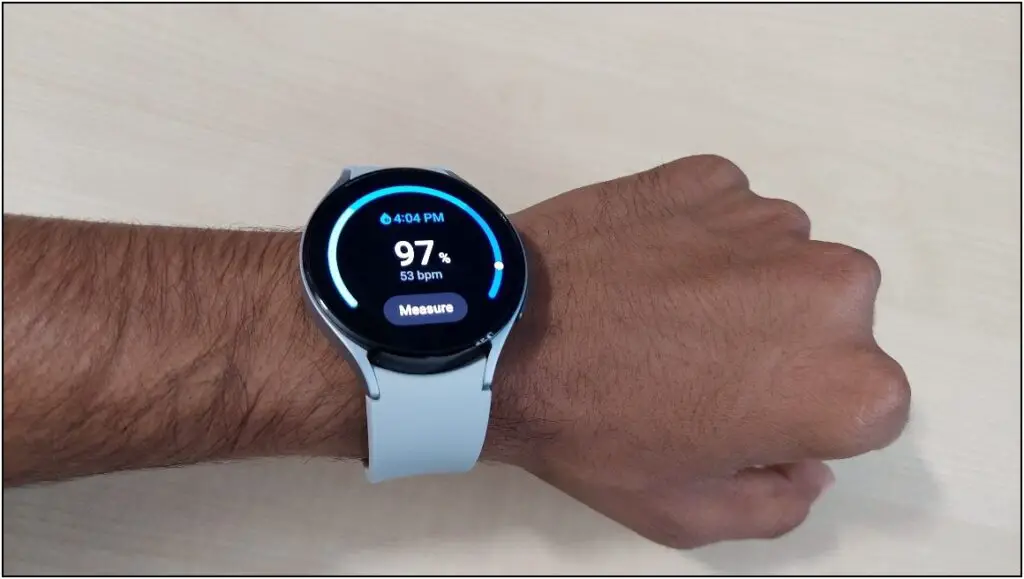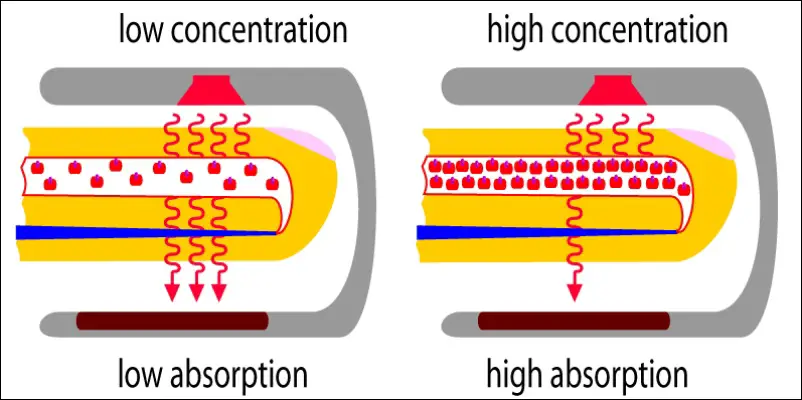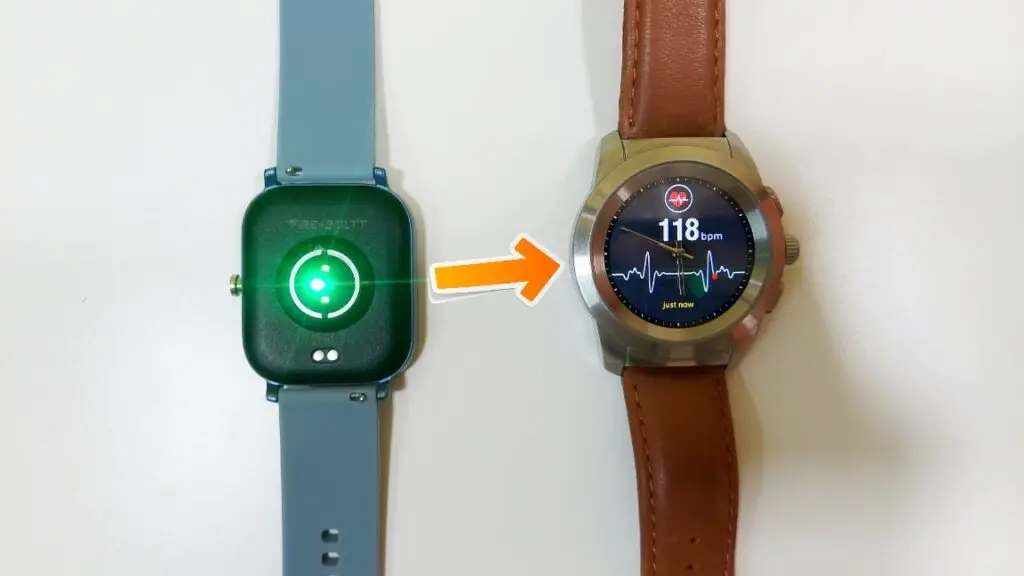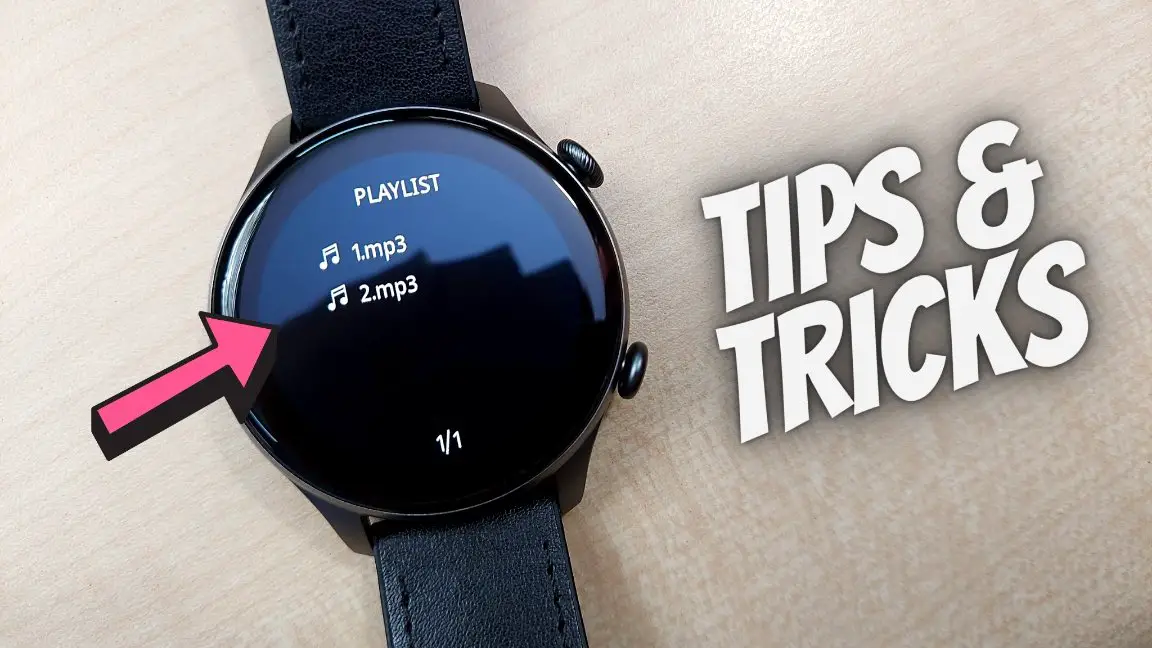Initially, the majority of smartwatches had only heart rate sensors. But now, brands have started giving the SpO2 or Blood oxygen monitor even on budget smartwatches. But have you ever wondered how the SpO2 or Blood Oxygen sensor works on a smartwatch? In this article, let’s see the working of SpO2 sensors in smartwatches, how accurate they are, and ways to check their accuracy.
Related | How Do Smartwatches Measure Your Heart Rate?— Check Accuracy
What is SpO2 or Blood Oxygen? How Important it is?

The SpO2 or blood oxygen levels are the percentage of oxygen in the blood. In simple words, it is a measure of how much oxygen your red blood cells are carrying.
An ideal level of SpO2 is important to maintain the health of all tissues in the body. Lower blood oxygen levels result in Hypoxemia with symptoms like headache, shortness of breath, coughing, sneezing, bluish color in skin or nails, and more.
If not treated in time, it can turn into Hypoxia, which is a condition of low oxygen levels in blood tissues. To keep the body healthy and active, one must maintain normal blood oxygen saturation levels.
This is why measuring SpO2 or keeping track of it is important. The body automatically maintains it through breathing- the lungs take the inhaled oxygen and pass it to hemoglobin that travels throughout the body.
The body can increase oxygen levels in high-density workouts like running. A healthy SpO2 level is usually 95% or higher. It can be 90% for some people with chronic lung disease or sleep apnea.
According to WHO, a patient with oxygen saturation of 94% or lower needs quick medical attention. And if less than 90%, it’s a clinical emergency.
How Smartwatches Measure SpO2, How the Sensor Works?

Blood Oxygen on Galaxy Watch 4
Smartwatches use the Reflectance Oximetry technique, which projects Red and Infrared light (IR) into the wrist. This red light enters the blood tissues containing oxygen, reflecting the light back to the sensor. The difference between the level of injected light and reflected light is shown as the SpO2 level of a body.

Image: HowEquipmentWorks
Usually, it is more accurate when body temperature is low as the blood flows throughout the tips of the body and the IR light is closer to the blood.
How Accurate Are SpO2 Sensors on Smartwatches?

The Reflectance Oximetry technique on smartwatches shows SpO2 based on the difference between injected and reflected light. But, this can fluctuate a lot as blood tissues and oxygen in hemoglobin flows continuously.
On the other hand, a medical tool like Oximeter uses an electronic process and a pair of LEDs that enter the body’s translucent part (fingertip and earlobe). The red and infrared LEDs having 650nm and 950nm wavelengths can differ significantly between oxygenated and non-oxygenated blood.
The oxygenated blood absorbs more infrared light and passes more red light. At the same time, the non-oxygenated blood absorbs more red light and passes more infrared light. This makes the Oximeter more accurate and reliable.
The Oximeter is more accurate than the SpO2 sensor on the smartwatch due to the difference in measuring techniques of both devices. Sensors on the watch do not have a good wavelength causing the data to fluctuate. This affects the accuracy.
But again, you’re relying heavily on smartwatch blood oxygen readings, we’d prefer the likes of the Apple Watch and Samsung Galaxy Watch.
Can You Measure Smartwatch’s SpO2 Sensor Accuracy?

You can measure the SpO2 accuracy of a smartwatch in different ways. The easiest way to check how good the watch’s SpO2 sensor is is to use an Oximeter.
Attach the Pulse Oximeter to your finger and wear the smartwatch on your wrist simultaneously. Toggle the SpO2 Monitor on the watch and compare the readings with the one on the Oximeter.
Check the levels and fluctuating frequency on both devices for at least two minutes to get a better idea.
Further, you can put the smartwatch on any object and enable the SpO2 monitor. If it shows any false readings, the sensor may be inferior, or the calibration is not good. Watches with proper sensors will refuse to measure blood oxygen if the watch is not worn in hand.
We tested and compared the readings on Samsung Galaxy Watch 4, Honor Band 6, and Firebolt SpO2 smartwatch. The former was the most accurate vis-a-vis Oximeter readings.
Should You Rely on Smartwatch for SpO2 Monitoring?

If you have a smartwatch with a SpO2 monitor, you can use it for daily casual tracking. However, do not rely on it for medical reasons as the readings may not be as accurate as an Oximeter- concluded by the National Centre of Biotechnology.
Some watches come with more sensors and offer more accuracy but are costly in general. For instance, a report in the journal Scientific Reports mentions Apple Watch 6 “is a reliable way to obtain heart rate and oxygen saturation (SpO2) in patients with lung diseases under controlled conditions”.
Similarly, the Samsung Galaxy Watch 4 is quite accurate in yielding Spo2 levels- in our testing, we found a very occasional error of 1% vis-a-vis the Oximeter.
Anyways, we’ll still advise using medical-grade equipment over any smart-wearable if you’re having health issues that require SpO2 monitoring.
Wrapping Up
This is how the SpO2 sensor works on smartwatches and how accurate it is. Besides, we’ve also mentioned ways to check the smartwatch Spo2 sensor accuracy. I hope this helps you learn more about the blood oxygen feature on your watch. Stay tuned for more.


